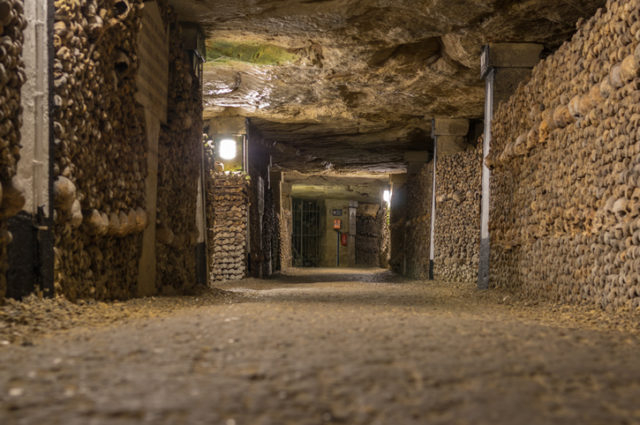Below The Streets Of Paris Is A Subterranean Labyrinth Of Tunnels That House The Bodies Of Over 6 Million People

The Catacombs of Paris are underground cemeteries in Paris, France, that house more than six million people's remains in a small section of a tunnel system constructed to connect the city's historic stone quarries. This ossuary, which extends south from the Barrière d'Enfer ("Gate of Hell") former city gate, was built in an effort to clear the city's overflowing cemeteries. After several basement wall collapses in Saint Innocents Cemetery Quarter in 1774 increased the urgency of the cemetery-eliminating measure, preparation work started soon after. Starting in 1786, nightly processions of covered wagons moved remains from the majority of Paris cemeteries to a mine shaft that had been opened nearby the Rue de la Tombe-Issoire.
The ossuary was virtually forgotten until it was used as a unique location for concerts and other private events at the beginning of the 19th century. In 1874, following more restorations and the construction of accesses near Place Denfert-Rochereau, it was made accessible to the general public. The Catacombs are one of the fourteen City of Paris Museums that Paris Musées manages as of 2013. Even though the ossuary only makes up a small portion of the carrières de Paris (or "quarries of Paris") underground tube system, Parisians now frequently refer to the entire system as the catacombs.











